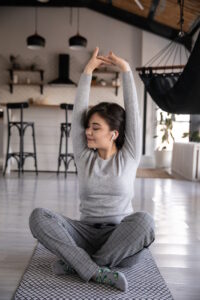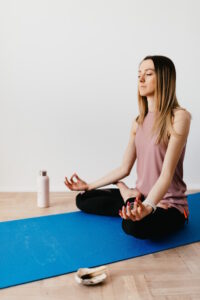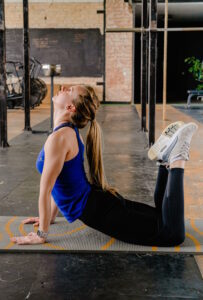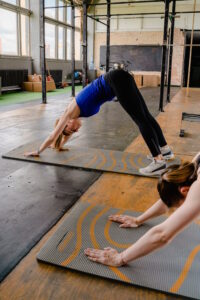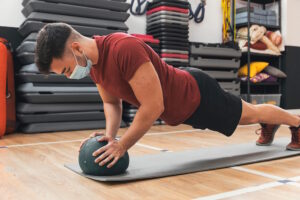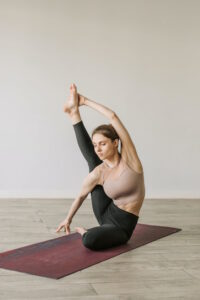
Amid the chaos and demands of daily life, finding moments of relaxation becomes essential for maintaining overall well-being. In the realm of Pilates, breathing techniques stand as powerful tools that can enhance the benefits of the practice and facilitate deep relaxation. By mastering the art of mindful breathing, we unlock a pathway to tranquility and inner calm that complements the physical aspects of Pilates exercises.
What is the best relaxing breathing technique?
When it comes to relaxation, the “4-7-8” breathing technique often takes the spotlight. This technique involves inhaling deeply through your nose for a count of 4, holding the breath for a count of 7, and exhaling slowly through pursed lips for a count of 8. The prolonged exhalation activates the parasympathetic nervous system, triggering a relaxation response.
The “4-7-8” technique can be easily incorporated into your Pilates practice. Begin by incorporating it during moments of rest between exercises or at the end of your session. This technique not only fosters relaxation but also complements the mindful movement of Pilates, creating a harmonious mind-body connection.
What is the 432 breathing technique?
The “4-3-2” breathing technique is a rhythmic and calming approach that involves inhaling for a count of 4, holding for a count of 3, and exhaling for a count of 2. This pattern encourages slow and deliberate breathing, promoting a sense of calm and reducing stress.
Incorporating the “4-3-2” technique into your Pilates routine can amplify the relaxation benefits. During exercises, focus on matching your breath to the rhythm of your movements. For instance, inhale for four counts during the preparation phase and exhale for two counts as you execute the movement. This synchronization enhances both the physical and mental aspects of your practice.
What are the 5 fundamental breathing techniques?
1. Diaphragmatic Breathing: Also known as belly breathing, this technique involves expanding the diaphragm as you inhale, allowing the abdomen to rise. Exhale slowly to release tension and stress.
2. Deep Breathing: Inhale deeply through your nose, allowing your lungs to expand fully. Exhale slowly through your mouth, letting go of any tension. This technique calms the nervous system and promotes relaxation.
3. Pursed-Lip Breathing: Inhale through your nose for a count of two, then exhale through pursed lips for a count of four. This technique helps regulate your breath and encourages relaxation.
4. Alternate Nostril Breathing: Close one nostril with your finger and inhale deeply through the open nostril. Close the other nostril, release the first, and exhale through the open nostril. This technique balances energy and promotes a sense of calm.
5. Box Breathing: Inhale for a count of four, hold for a count of four, exhale for a count of four, and hold for a count of four. This technique creates a balanced and calming breath cycle.
What type of breathing technique is used in Pilates?
Pilates employs a type of breathing known as “lateral thoracic breathing” or “lateral ribcage breathing.” This technique involves inhaling deeply through the nose, allowing the breath to expand the ribcage sideways. As you exhale through pursed lips, the ribcage gently contracts.
In Pilates, the focus on lateral thoracic breathing serves multiple purposes. It provides support for the core muscles, enhances stability, and maintains a connection between breath and movement. This type of breathing encourages a mindful approach, ensuring that each movement is executed with intention and control.
Summarizing the Answers
Breathing techniques in Pilates are not only integral to the practice but also potent tools for relaxation. From rhythmic patterns like the “4-3-2” technique to the synchronization of breath with movement, each technique offers a unique path to tranquility. As you incorporate these techniques into your Pilates routine, you weave a tapestry of relaxation that harmonizes the mind, body, and breath. This integration not only enhances the physical benefits of Pilates but also nurtures a deep sense of inner calm and well-being.

